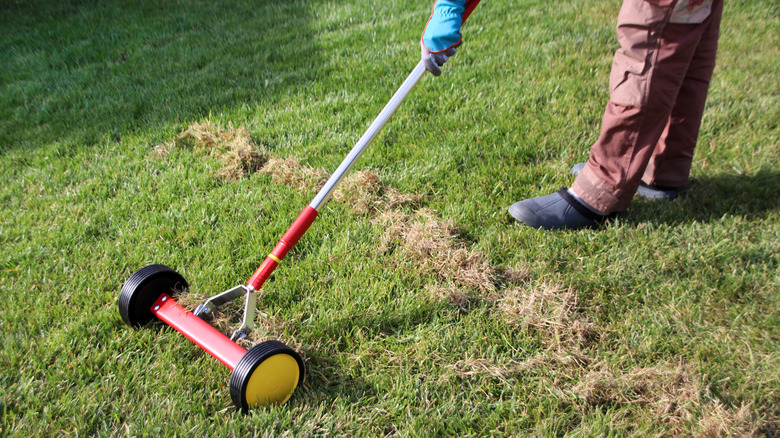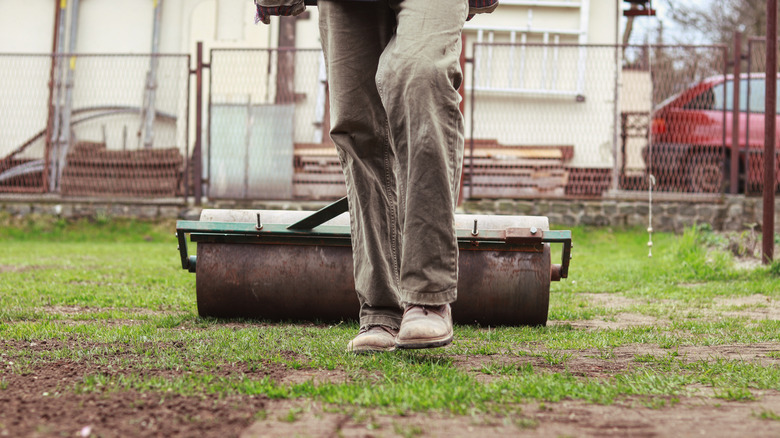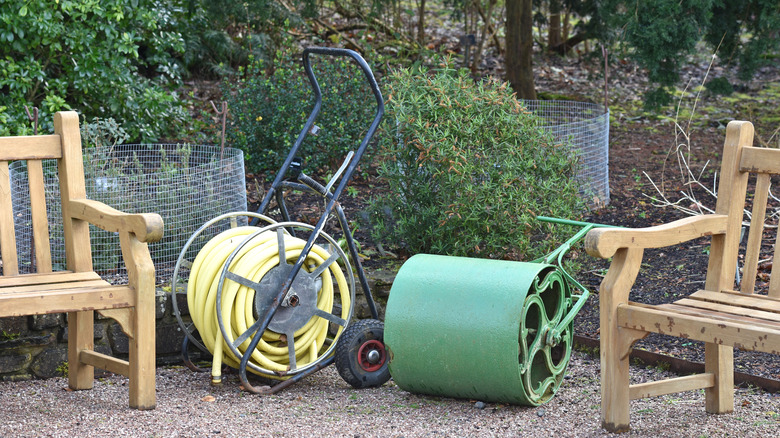What Is Lawn Rolling And Why Should You Try It?
Lawn rolling is a process that involves using a heavy, cylindrical roller to flatten and even out your lawn's surface. The primary goal of lawn rolling is to create a smooth, level surface for your grass. This process can help eliminate small bumps and imperfections that may develop over time due to various factors such as soil settlement and animal activity. By leveling out imperfections, you can create a more visually appealing and even landscape. This not only makes your lawn look better, but it also makes mowing and other lawn-care tasks more manageable. A smoother surface also allows the mower to glide effortlessly over the leveled grass, providing an even cut and making maintenance easier.
Lawn rolling offers several benefits when done correctly and under appropriate conditions. Although these advantages contribute to a healthier and more attractive lawn, timing your lawn rolling activities appropriately is important. In this article, you'll discover many other benefits of lawn rolling and why you should try it. We'll also examine the potential drawbacks of excessive lawn rolling.
Benefits of lawn rolling
One of the main benefits of lawn rolling is improved seed-to-soil contact or reseeding. After overseeding your lawn or laying new sod, lawn rolling can help press the seeds or sod firmly into the soil. This enhances germination rates and ensures better root establishment, promoting a lush and healthy lawn. Enhanced lawn aesthetics are another benefit of lawn rolling. A well-maintained, level lawn can improve the overall appearance of your property and boost its curb appeal. This is particularly important if you are looking to sell your home or take pride in maintaining a beautiful outdoor space.
Lawn rolling can also help repair frost heave damage. Winter frost can cause soil to heave and create an uneven lawn surface. Rolling your lawn in early spring can help address this damage and restore a smoother lawn. Additionally, rolling infills small depressions in your lawn, preventing water from pooling in those areas and reducing the risk of waterlogged grass or soil erosion.
While lawn rolling can be beneficial in some situations, it's essential to be aware of its potential downsides. According to the University of Michigan, severely compacting the soil can lead to poor root growth, reduced water infiltration, and increased runoff. It's crucial to use lawn rolling judiciously and avoid rolling when the soil is overly wet or susceptible to compaction. Soil with a clay-like composition is more prone to compaction.
When to use a lawn roller
The ideal time for lawn rolling is the early spring when the soil is moist but not overly saturated. Rolling during this period can help address damage caused by winter weather, such as frost heave. It can also prepare your lawn for the upcoming growing season. This timing also allows the grass to recover quickly as it enters its active growth period. Avoid rolling during drought, as these conditions can make the soil more susceptible to compaction and damage. Using a lawn roller after installing fresh sod can improve the overall success of the new grass by removing air pockets, ensuring proper root establishment, and creating a seamless transition between the sod and the existing lawn.
To roll your lawn, you'll need a lawn roller, a heavy, cylindrical device that can be filled with water or sand to attain the desired weight. These rollers are available for purchase or rent from garden centers and home improvement stores. To begin, fill the roller with water or sand until it reaches the appropriate weight, and then slowly push or pull it across your lawn in a consistent pattern. Ensure even coverage and avoid missing any areas.
In conclusion, choosing the right time and using the appropriate technique can improve your lawn's appearance and health while minimizing risks.


